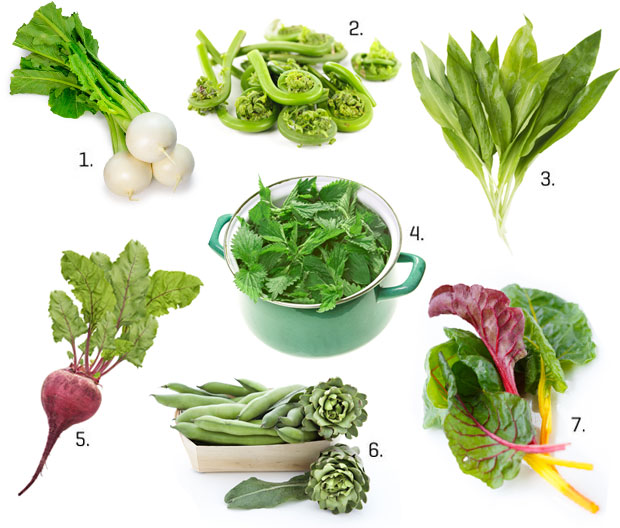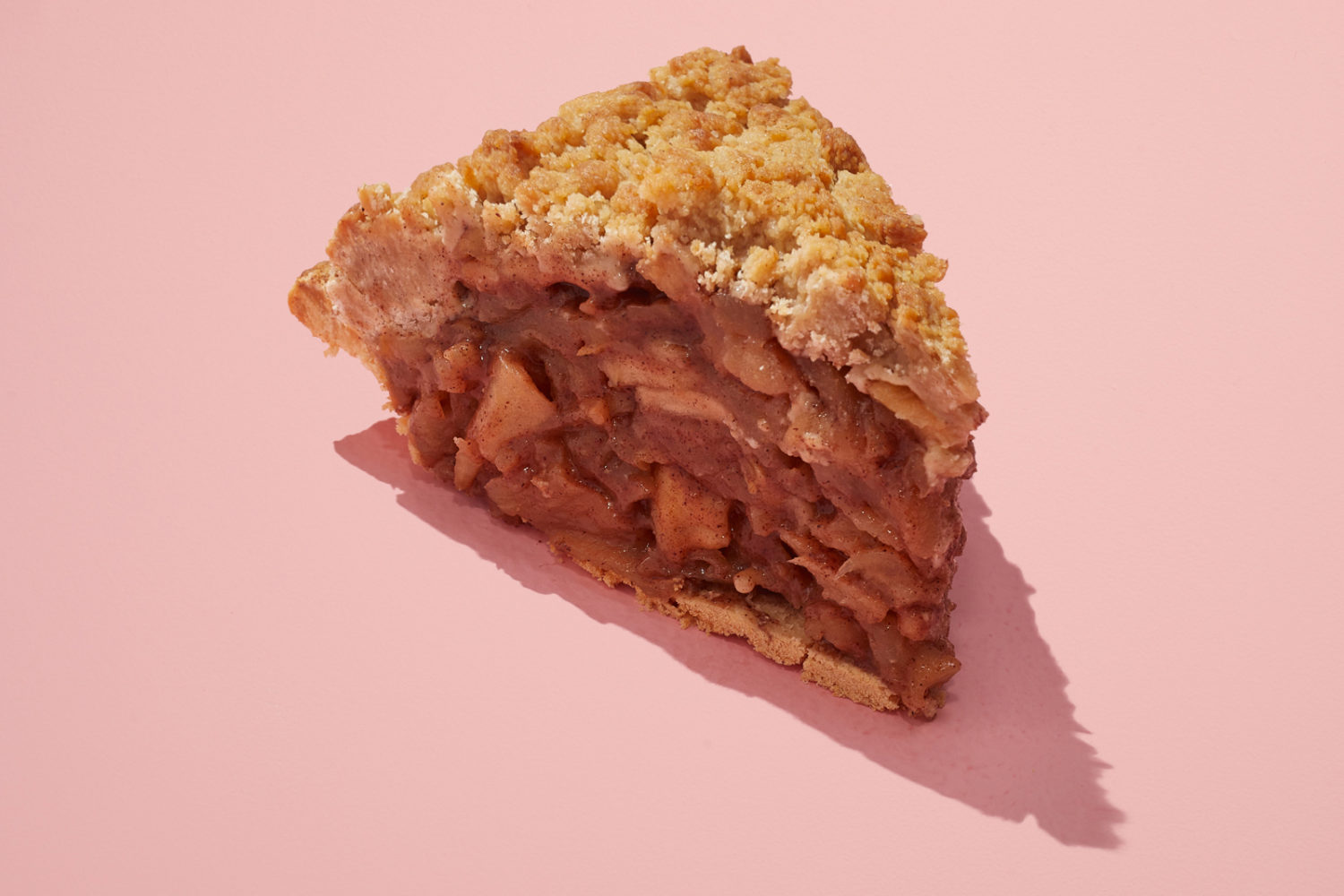After a very long winter, we’re overjoyed to see all the spring produce flooding farmers markets and grocery aisles. And yet, much like the season itself, the veggies aren’t all as easy-going as their summer cousins. Ever wondered what do with nettles or ramps, or how best to shell fava beans? Then read on for tips, recipes, and more.
1) Spring turnips
Spring turnips are different from their larger, tougher winter brethren. The pale bulbs are smaller, more tender, and sweeter, and the greens are far more delicate. Contrary to popular preparation, you can eat both raw.
Best uses: Thinly slice the bulbs—and if you’re a root-to-top eater, the greens as well—and add to salads for a clean crunch, similar to radishes; I’m a fan of sweet-spicy Asian preparations, as in this recipe for shredded turnip-and-carrot slaw. They can also withstand a light braise.
Storing/cleaning: Like radishes, your turnips will last longer if you cut the greens immediately and store the bulbs and stems separately, preferably in loosely sealed bags in the crisper. Rinse to use—they’ll get soggy and mealy otherwise.
2) Fiddleheads
These young fern fronds look interesting, and also tricky to prepare. They take a little effort, but the springy flavor—think asparagus and a little artichoke—is worth it, as is the dose of antioxidants and omega-3s. Just don’t eat them raw; the flavor isn’t pleasant, and neither is the upset stomach.
Best uses: Go simple. Gently sauté them in butter or olive oil with garlic for about five minutes, then sprinkle lemon zest on top. Alternatively you can boil or steam them to add an attractive garnish to Bloodys, or serve atop smoked-salmon crostini with fresh goat cheese.
Storing/cleaning: Peel off the thin, brownish exterior and rinse with several changes of water to get out grit. They don’t have a long shelf life, but keep them sealed in the fridge if need be. They can also be frozen.
3) Ramps
There’s a reason chefs covet these bunches of wild onions: Like Matt Damon in EuroTrip, their appearance is brief but oh so good.
They tend to smell more pungent than they taste, though the flavor—like a cross between leeks and garlic—adds oomph to a variety of dishes.
Best uses: Ramps are incredibly versatile. Blend them into pesto, grill them alongside steaks, or toss them in pasta (I tried this ramp carbonara recipe recently, to rave reviews). If you love the flavor, try pickling them for later use.
Storing/cleaning: Wrap the bulbs in damp paper towels and keep them stored in the fridge in a plastic bag; this should keep them fresh for about three days. When you’re ready to cook them, rinse in a colander under cold water, trim off the roots, and peel off any slimy translucent skin around the bulbs.
4) Nettles
Stinging nettles are typically avoided, so why should you buy them? Health benefits, to start. The leafy plants lose their sting after a quick blanch, but impart a nice dose of iron and vitamins, and are used in everything from arthritis treatments to dandruff control. Thankfully, the taste isn’t medical; use them in dishes to add earthy, vegetal notes.
Best uses: Blend them with ricotta for filling ravioli, make nettle soup, or chop the blanched leaves and mix them with feta for a verdant dip.
Storing/cleaning: Handle nettles with care. Wear thick gloves while rinsing them under several changes of cold water, and while separating the leaves from the tough stem. Store in a sealed bag in the crisper.
5) Beets and their greens
Like the aforementioned turnips, spring beets and their greens are less tough than their winter cousins. Even if you’re suffering root-vegetable fatigue from winter, there are plenty of springy preparations for these healthful veggies. Remember not to toss the leaves, as they’re rich in flavor and antioxidants.
Best uses: Sauté the greens with bacon and garlic, shave the raw bulbs for carpaccio, or soak chunks in gin for three days to make vibrant, naturally sweet spring cocktails.
Storing/cleaning: As with turnips, separate the stems from the bulbs and store them separately in sealed bags in the crisper.
6) Fava beans
The toughest thing about favas is extracting the fat beans from their pods. The effort is worth it: Their flavor is rich and faintly sweet, and can enhance any number of dishes. If you’re really feeling lazy, certain specialty stores sell frozen favas (best for more heavy-handed preparations, such as dips).
Best uses: I’m a big fan of Yotam Ottolenghi’s recipe for fava-bean salad with mint and goat cheese. Other possibilities are endless: sautés, soups, hummus, you name it. Saveur has a great lineup of ideas.
Storing/cleaning: Keep the beans in a sealed bag in the fridge. Once you’re ready to get peeling, watch this handy video.
7) Rainbow chard
This eye-catching breed of chard is too pretty to pass up at the farmers market, but it’s not all show—the robust green is both good for you and tasty, like a more delicate spinach.
Best uses: You’ll lose some of the vibrant color in cooking, so if you want visual oomph, toss the leaves in salad or use the stems to add pop to a crudité platter. Chard and eggs also go hand in hand, from frittatas to baked eggs on a bed of garlic-sautéed leaves.
Storing/cleaning: Store it unwashed in a bag in the crisper. Rinse to clean, and dry well before use.















